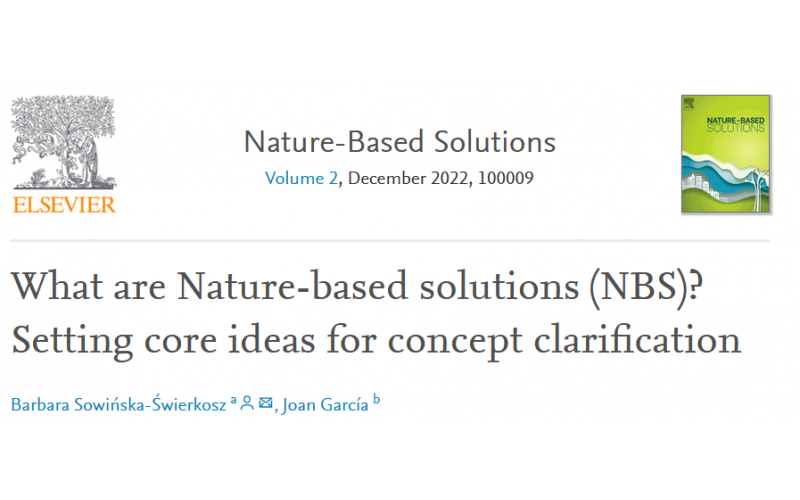Although nature-based solutions (NbS) have been promoted as a key tool for solving diverse environmental and societal problems, the concept and its practical applications remain unclear. This ambiguity is linked to the fact that the NbS concept has emerged from the integration of multiple scientific fields. In addition, there has been a delay in establishing clear standards for NbS, hence a number of actions that today would be seen as complementary or related measures, are frequently branded as NbS. Thus, this paper paves the way to clarify NbS by identifying their core features and formulating criteria to exclude certain actions from the set of NbS. After reviewing 20 definitions of NbS, these actions are identified as interventions that: (1) are inspired and powered by nature; (2) address (societal) challenges or resolve problems; (3) provide multiple services/benefits, including biodiversity gain; and (4) are of high effectiveness and economic efficiency. The non-systematic review includes both peer-review research papers and relevant official reports, enabling the formulation of a set of criteria that exclude green/blue interventions from the set of NbS. These are: (1) lack of functioning ecosystems; (2) random actions; (3) post-implementation goal(s); (4) negative/no impact on biodiversity; (5) same benefits as grey infrastructure alone; (6) unfair distribution of benefits; (7) ‘copy-paste’ implementation approach; (8) top-down model of governance; (9) static management approach; (10) financial expenses disproportionate to benefits; and (11) ‘point scale’ approach. Ongoing and future practice will contribute to our understanding of the long-term operation of NbS as well as to the detection of synergies and trade-offs, thereby enabling us to better define this concept's boundaries.

